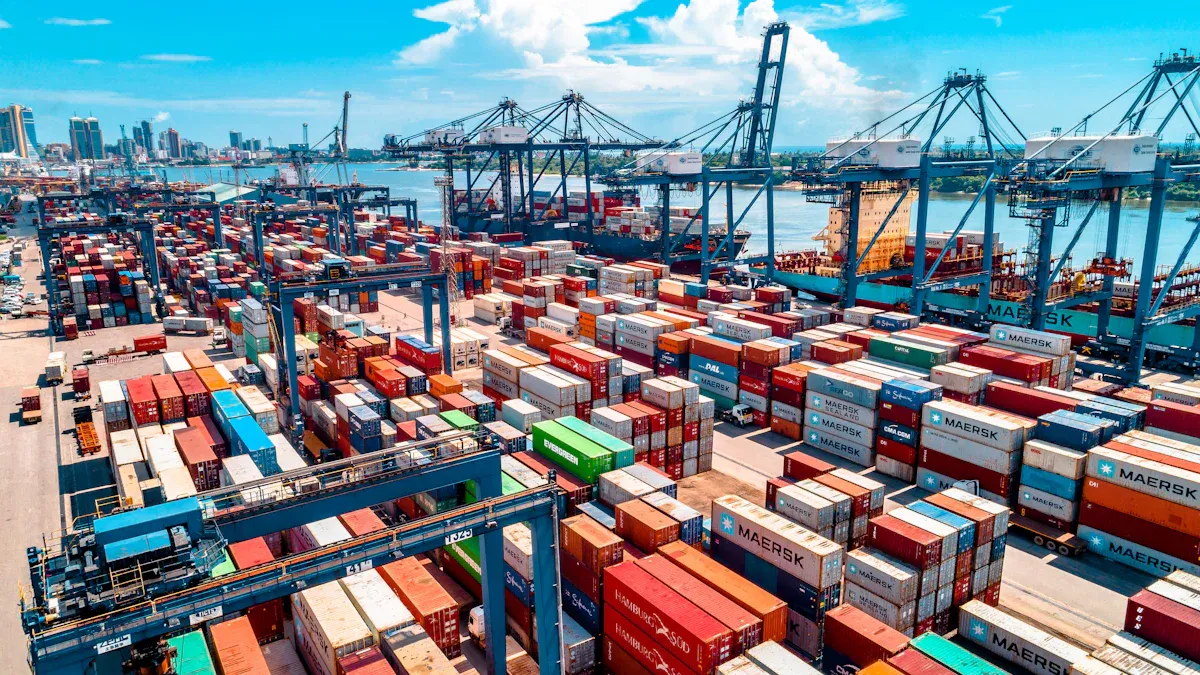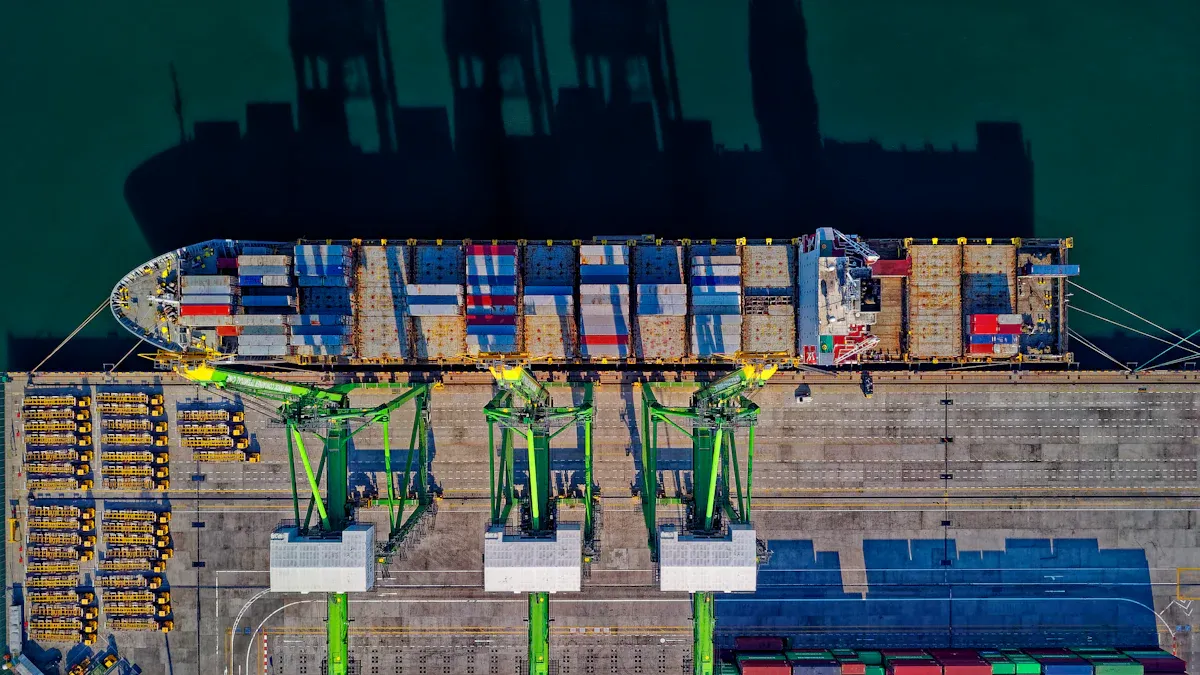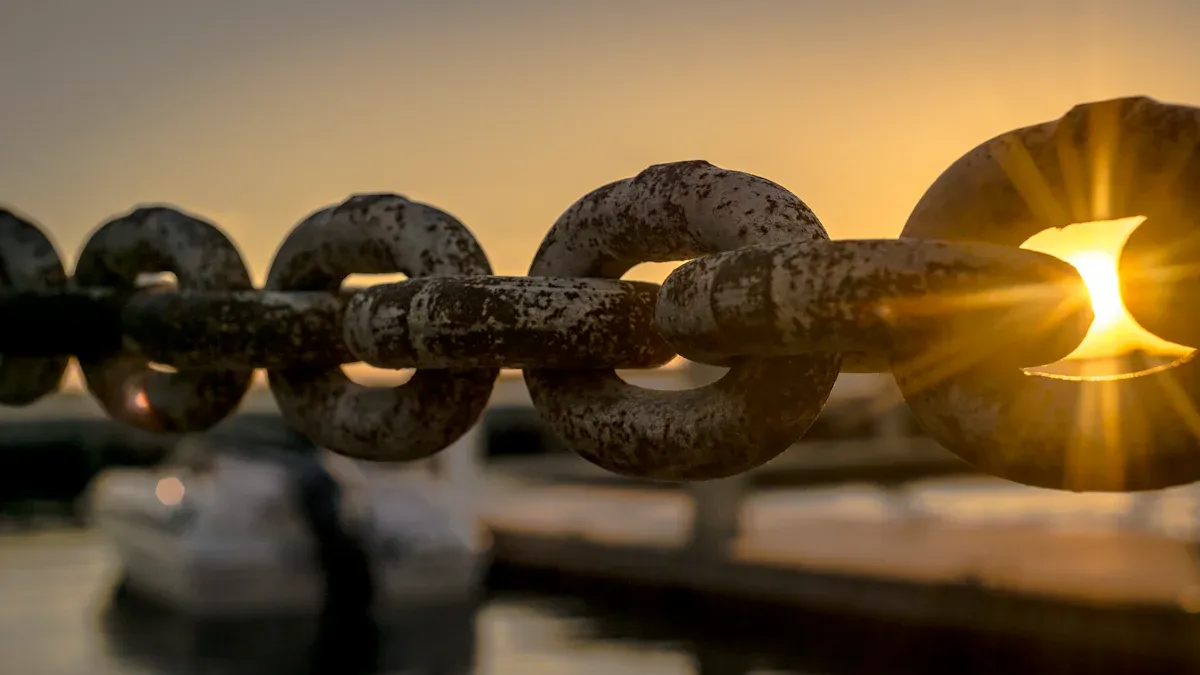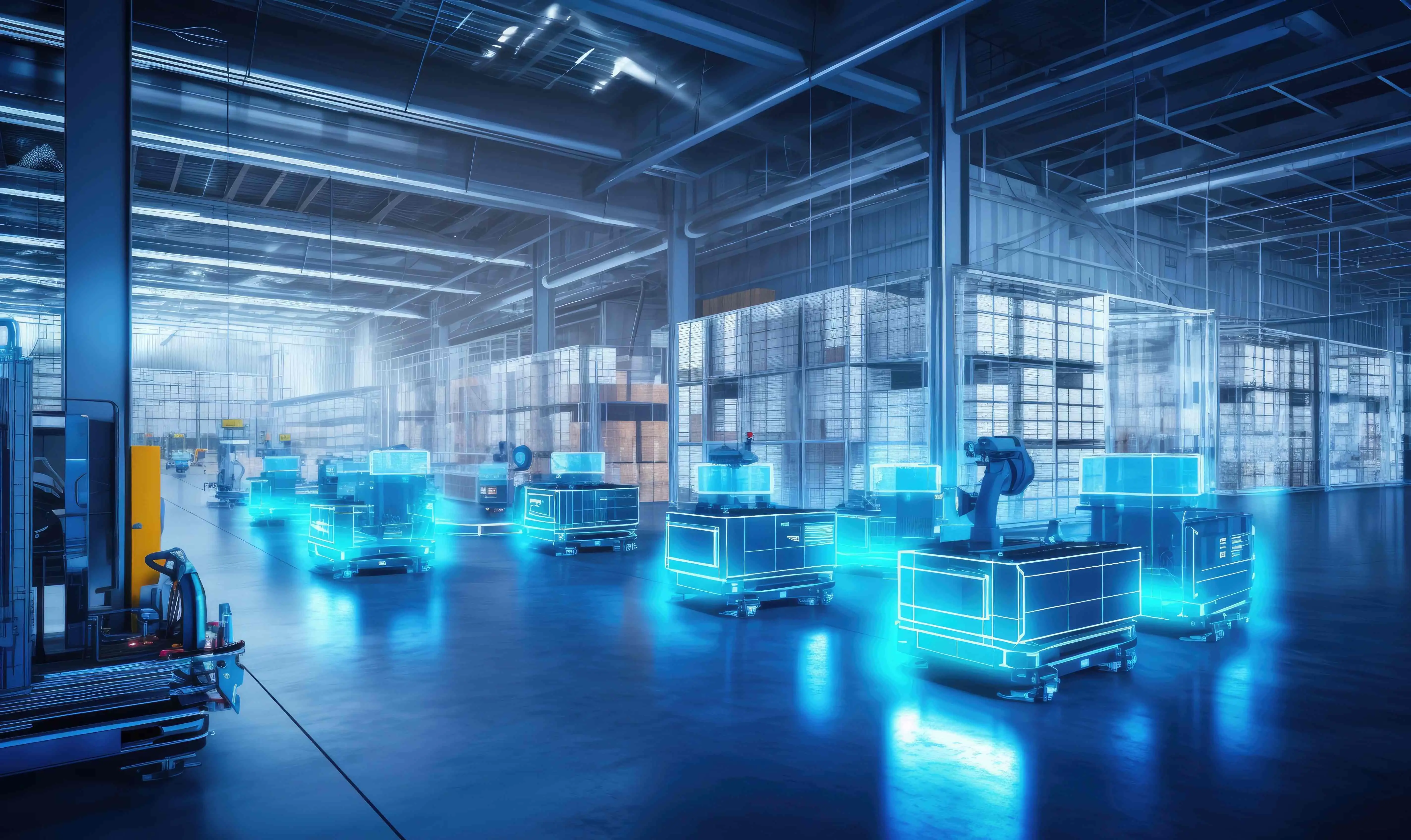How to Implement Effective Ocean Freight Solutions in 2025

You live in a world where ocean freight changes quickly. In 2025, you will notice these trends:
Container transport volume goes up by 3% as e-commerce gets bigger.
Net capacity supply grows by 5.2%.
Using technology helps save money and work faster.
Green shipping and real-time data are now normal in the industry.
Use new Ocean Freight Solutions to keep up with others.
Key Takeaways
Use advanced technology like AI, real-time tracking, and data analytics to help plan shipments better. This can save money and help avoid delays.
Build strong partnerships with reliable carriers and freight forwarders. This helps make ocean freight operations smooth, flexible, and cost-effective.
Follow new 2025 regulations and use green shipping practices. This can lower carbon emissions, meet rules, and make your business look better.
Assess Needs
Shipment Volumes
You should know how much you ship before picking Ocean Freight Solutions. First, gather clear data about your past shipments. Use both numbers and expert ideas to make better guesses. Many companies now use AI-driven tools like ADAMftd. These tools mix data from trade volumes, market needs, and real-time rule updates. They help you see your whole supply chain and find trends early.
Tip: Update your guesses often to keep up with the market. No one way works for all, so use different tools and expert help together.
Trade Lanes
Trade lanes are the main paths your goods take across the ocean. In 2025, some trade lanes will grow faster than others. For example, more goods will move from Vietnam and India as companies find new places to make things. The Suez Canal and Belt and Road Initiative routes will get busier because of better roads and new deals.
Here is a quick look at key trade lanes and what makes them grow:
Trade Lane / Area | Growth Driver / Reason | 2025 Impact |
|---|---|---|
LNG Import Routes to Europe | Switch to LNG from new suppliers | More LNG ships needed |
Belt and Road Initiative (BRI) | New roads and partnerships | New routes, better links |
Suez Canal Route | Expansion and reopening | Faster, more Europe-Asia shipping |
East-West Trade Lanes | Shipping alliance changes | More competition, more growth |
Alternative Manufacturing Hubs | Move to Vietnam, India | Volume changes, new patterns |
Cargo Types
You need to know what kind of cargo you ship. Each type needs special care and equipment. The most common cargo types are:
Container Cargo: Regular goods, sometimes need to stay cold.
Roll-on/Roll-off (RoRo): Cars and machines that drive on and off ships.
Break Bulk: Big or odd-shaped things like machines or wind turbine blades.
Dry Bulk: Loose items like grains or ores.
Liquid Bulk: Liquids like oil or chemicals, moved in tankers.
Each cargo type has its own shipping needs. For example, container cargo uses cranes, but RoRo cargo drives on and off the ship. Knowing your cargo helps you choose the best Ocean Freight Solutions for your business.
Ocean Freight Solutions with JUSDA
If you want to ship by sea in 2025, you need a partner who helps with every step. JUSDA offers many services for ocean shipping. You can pick what works best for your business. It does not matter if you ship big or small loads, or if your goods are regular or special.
FCL and LCL Options
JUSDA lets you choose between Full Container Load (FCL) and Less than Container Load (LCL). FCL is good if you have enough goods to fill a container. This choice gives you more control and faster shipping. LCL is better for smaller shipments. You share space with others, which saves money and gives you more choices.
Shipping Option | Best For | Main Benefits |
|---|---|---|
FCL | Large shipments | Faster, secure, direct |
LCL | Small or mixed cargo | Cost-effective, flexible |
JUSDA helps you pick the right option. They look at your shipment size, timing, and budget. This help makes shipping easy and dependable.
Specialized Cargo
Sometimes you need to ship goods that need extra care. JUSDA can handle many types of special cargo. This includes hazardous materials and items that need to stay cold. JUSDA follows all the rules and has the right certificates.
JUSDA follows rules for shipping hazardous goods.
They have certifications like UN38.3 for lithium batteries and IATA Dangerous Goods Regulations.
For food and biological items, JUSDA uses USDA and EU phytosanitary certificates.
JUSDA uses special packaging and paperwork, like Material Safety Data Sheets, to keep things safe.
For goods that need to stay cold, JUSDA uses refrigerated trucks and checks the temperature all the time.
JUSDA follows FDA and USDA rules for food shipping.
They use insulated liners, thermal wraps, and vacuum-sealed packs.
JUSDA cools vehicles before loading and keeps them clean to stop contamination.
You can track your shipment and see its condition at every step.
You can relax knowing your cargo is safe, legal, and handled with care.
Global Network
You need a partner with a strong network to reach new places. JUSDA has over 155 service points around the world and lots of warehouse space. This network helps you move goods fast and easily across borders.
JUSDA uses smart technology and automation to make shipping simple. Automation cuts down on paperwork and speeds up work. Your team can focus on important jobs instead of doing things by hand. JUSDA’s systems connect with big platforms, so you get updates and can check your shipments anytime.
Note: JUSDA’s worldwide network and technology help your business grow without extra costs or delays.
When you use Ocean Freight Solutions from JUSDA, you get more than shipping. You get a partner who knows your industry, uses new technology, and helps you grow everywhere.
Choose Partners
Carrier Criteria
You must pick the right carriers for Ocean Freight Solutions. Good carriers help you avoid late shipments and extra fees. Here are some steps to help you choose:
Make sure carriers fit your supply chain needs. Every business is different, so do not use the same carrier for everything.
Think about both cost and reliability. Cheap carriers might cause delays or break rules.
Choose carriers who talk clearly and want to work with you for a long time.
Pick carriers who have flexible routes and backup plans if things go wrong.
Do not send all your shipments with just one cheap carrier.
Check if the carrier uses technology to track shipments and show how they perform.
Use scorecards to check if they deliver on time, have enough equipment, and avoid problems.
Tip: Give your shipping plans and feedback to carriers. This helps them get better and gives you better service.
Freight Forwarders
Freight forwarders make shipping between countries easier. They have lots of experience and know many people in the industry. Here are some reasons to use them:
They know global logistics and customs rules, so you avoid fines and delays.
They help you save money by getting good prices and combining shipments.
Their network gives you more ways to ship and makes customs easier.
They lower risks with insurance and real-time tracking.
They handle every step, so you can focus on your main work.
Collaboration
Working closely with logistics partners helps you in many ways:
You get faster shipping because everyone shares information.
Costs go down when you share resources and avoid waste.
Real-time tracking lets you see your shipments and make smart choices.
You can change plans quickly if the market or events change.
Working together builds trust and helps you get goods on time.
Note: Strong partnerships make your Ocean Freight Solutions more flexible and strong.
Technology Integration

Real-Time Tracking
It is important to always know where your shipments are. JUSDA’s JusLink Smart Supply Chain Real-time Collaboration Platform lets you do this. The platform uses RFID and Warehouse Management Systems (WMS) to follow goods from start to finish. You get to see your inventory and shipments at every step. JusLink also uses AI and IoT, so you can work with suppliers, manufacturers, and customers. This means you always know what is happening with your cargo. It helps you make quick choices and stop delays.
Note: Real-time tracking helps you find problems early and keeps your supply chain working well.
Automation & AI
Automation and artificial intelligence (AI) change how you handle ocean freight. JusLink uses AI to guess demand, match loads, and set prices. This helps you save money and ship on time. In warehouses, robots with AI sort and pick goods faster and make fewer mistakes. Carriers use AI to plan better routes, which saves fuel and stops empty trips. IoT sensors help you fix things before they break and cause delays. Automation also does paperwork and keeps up with new trade rules, making your work easier.
Robots sort and pick goods, making work quicker and more correct.
IoT sensors tell you when to fix things, so you have less downtime.
Data Analytics
Data analytics helps you make smart choices. When you use analytics, you can spend less and deliver faster. JusLink gathers and studies real-time data from your supply chain. You can see important numbers like on-time deliveries and shipping costs. Predictive analytics helps you plan routes and manage inventory. Companies using analytics say their customers are happier and their warehouses work better. You can find risks early and change your plans, so your supply chain stays strong and reliable.
Tip: Use analytics to check your progress and find new ways to make your ocean freight better.
Compliance & Sustainability

2025 Regulations
In 2025, there will be many new rules for ocean freight. These rules make shipping safer and cleaner. Some rules also help keep cargo secure. Here are some big changes you will see:
The IMO’s Carbon Intensity Indicator (CII) will show how much carbon ships use.
Ships must use cleaner fuels like green methanol and LNG.
More than 50 countries will want digital customs with blockchain.
Every shipping container will get scanned at ports to stop illegal or dangerous goods.
New trade bans and embargoes will happen because of world events.
Ports will add new taxes and environmental fees.
High-value cargo will need real-time GPS tracking in some places.
You also need to follow updates in important manuals and rules:
Regulation/Manual | Edition | Key Updates |
|---|---|---|
Dangerous Goods Regulations (DGR) | 66th | New UN numbers and battery rules |
Live Animal Regulations (LAR) | 51st | New crating and transport times |
Cargo Handling Manual (ICHM) | 9th | Better temperature tracking |
Battery Shipping Regulations (BSR) | 12th | Sodium-ion battery rules added |
Security Management Manual (SeMs) | 8th | New security requirements |
Green Shipping
You can help the planet by using green shipping steps. These actions lower pollution and make your supply chain better:
Pick ocean freight instead of air freight to cut emissions.
Combine shipments and fill containers to use fewer trips.
Choose fuel-efficient ships and use alternative fuels like biofuels or hydrogen.
Use paperless systems to save resources.
Manage waste by reducing, reusing, and recycling.
Plan routes with weather data to save fuel.
Work with ports that use clean energy and manage waste well.
Tip: Green shipping saves money, meets new rules, and helps your brand.
Carbon Reduction
Ocean freight makes a lot of carbon emissions. In 2024, global container shipping made 240.6 million tons of CO2. This was a 14% rise from 2021. Longer routes and faster speeds made emissions go up. You can help lower emissions by:
Using bigger, newer ships that use less fuel.
Slowing down ships when you can.
Filling containers all the way to avoid empty space.
Tracking carbon output and picking partners who meet reduction goals.
New rules will ask for a 65% cut in carbon intensity by 2040. If you add carbon goals to your shipping plans, you help the environment and stay ready for new rules.
Cost & Risk Management
Cost Optimization
You can save money on ocean freight by being smart. First, check prices from many carriers. This helps you get the best deal and avoid extra fees. Make your packaging fit well in containers. Less empty space means you pay less for shipping. Try to send your small shipments with others. This is called consolidation and it saves money.
Using more than one way to move goods also helps. You can mix ocean freight with rail or road for better timing and prices. Use tax exemption programs if you can. Work with agents who know how to lower duties and fees the right way. Use technology like data analytics and automation tools. These tools help you find ways to save and work faster. Build good relationships with carriers. If you work with them for a long time, you may get better prices and service.
Insurance
Insurance keeps your cargo safe from many risks. There are different types for different needs:
All-Risk Coverage protects against damage, theft, fire, and disasters. Pick this for goods that are valuable or break easily.
Free of Particular Average (FPA) covers certain risks like fire or sinking. This is good for cargo that is not risky.
With Average (WA) pays if some cargo is lost to save the rest.
Some shipments need insurance for total loss only. Others need insurance for special risks like theft or crashes. Insurance helps you get money back if something bad happens.
Contingency Plans
Problems can happen at any time. You need a plan to keep things moving. Use real-time info to change your shipping fast. Automated freight management and cloud tools help you act quickly. Use suppliers from different places. This lowers risk if one area has trouble.
Do a business impact analysis to find weak spots. Make backup plans with clear jobs and ways to talk. Check and update your plans often. Make sure you have enough insurance and strong systems. After a problem, look at what happened and make your plans better.
Performance Improvement
KPIs
You need to watch the right KPIs to know if your ocean freight solutions work well. KPIs help you see how you are doing and where you can get better. Here are some important KPIs to check:
On-time delivery shows if your shipments get there when they should.
Order cycle time tells you how long it takes from order to delivery.
Inventory turnover shows how often you sell and restock items.
Cost per unit shipped helps you keep shipping costs low.
Container utilization rate checks if you use all the space in containers.
Damaged goods rate tracks how much cargo gets broken.
Shipment visibility lets you know where your cargo is at any time.
Customer satisfaction gathers feedback about your service.
Tip: Check these KPIs often to keep your supply chain strong and working well.
Analytics
Advanced analytics help you make smarter choices. You can use analytics to find patterns in your shipping data and guess what might happen next. Real-time tracking with IoT devices helps you fix problems fast. Automation tools stop mistakes and make work go faster. Platforms like Xeneta look at lots of data, so you can compare prices and make better shipping plans. When you use analytics, you can set clear goals, get your team involved, and keep getting better results.
Market Adaptation
The ocean freight market changes quickly. You need to adjust to stay ahead. Many companies now change ship routes and schedules to match new trade patterns, like moving factories from China to Southeast Asia. Buying eco-friendly ships and working with other carriers helps save money and follow new rules. You can also make your supply chain stronger by buying from different places and using free trade deals. Predictive analytics help you plan for new trade rules and keep your shipping plans flexible.

JUSDA Solutions
To provide you with professional solutions and quotations.
To do well with Ocean Freight Solutions in 2025, you need to do a few things. First, use advanced analytics and AI to help you plan better. Next, make strong partnerships so your shipping is reliable. Pick software that can grow with your business size. Work with trusted providers such as JUSDA. Always check what your business needs and talk to experts for solutions that fit you.
See Also
Discover The Latest Innovations In Sea Freight 2024
Top Five Trends Shaping Supply Chain Efficiency Ahead
How Artificial Intelligence Is Transforming Supply Chains
Examining Cutting-Edge Transport Tech Advancing Supply Chains
